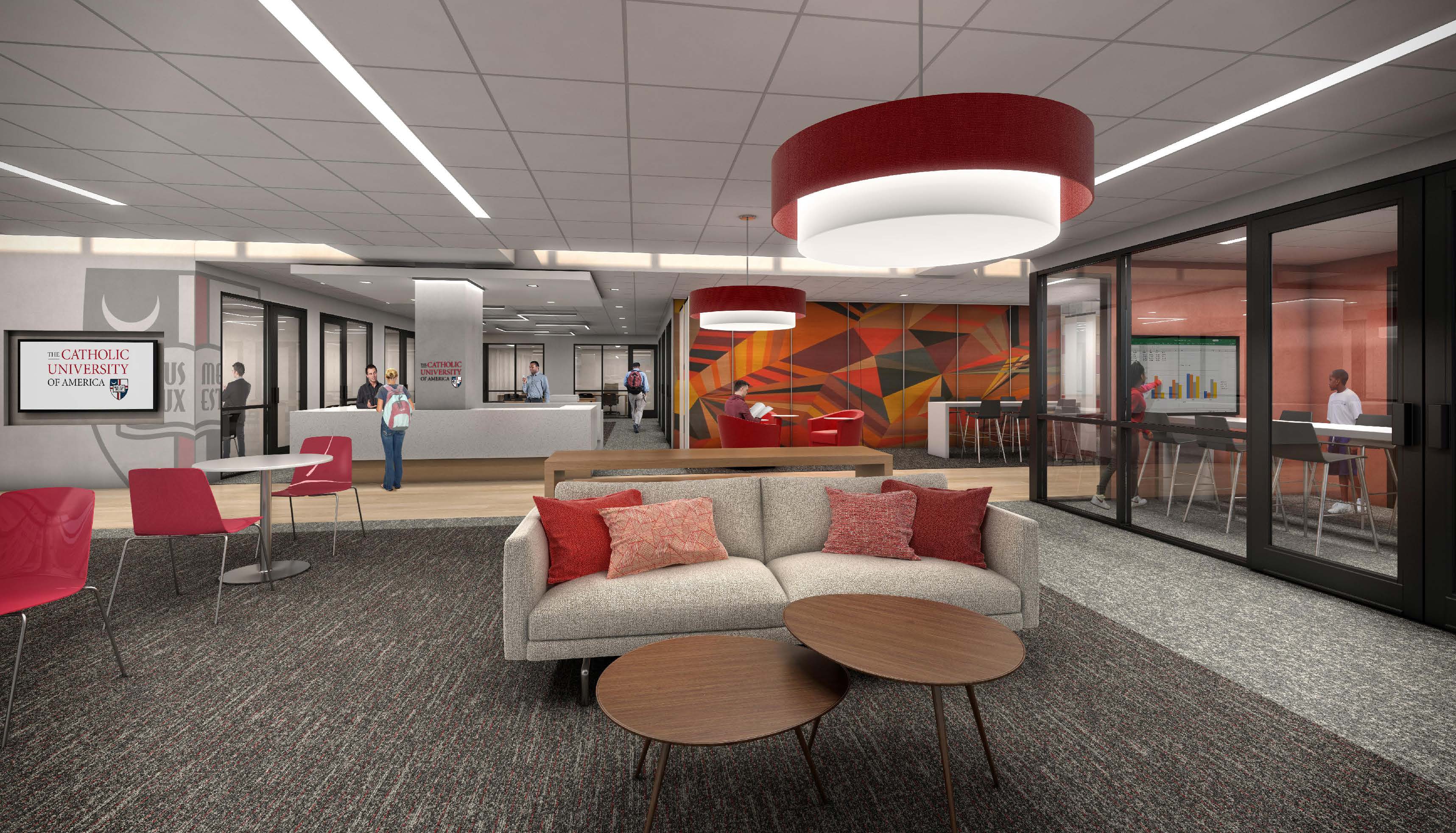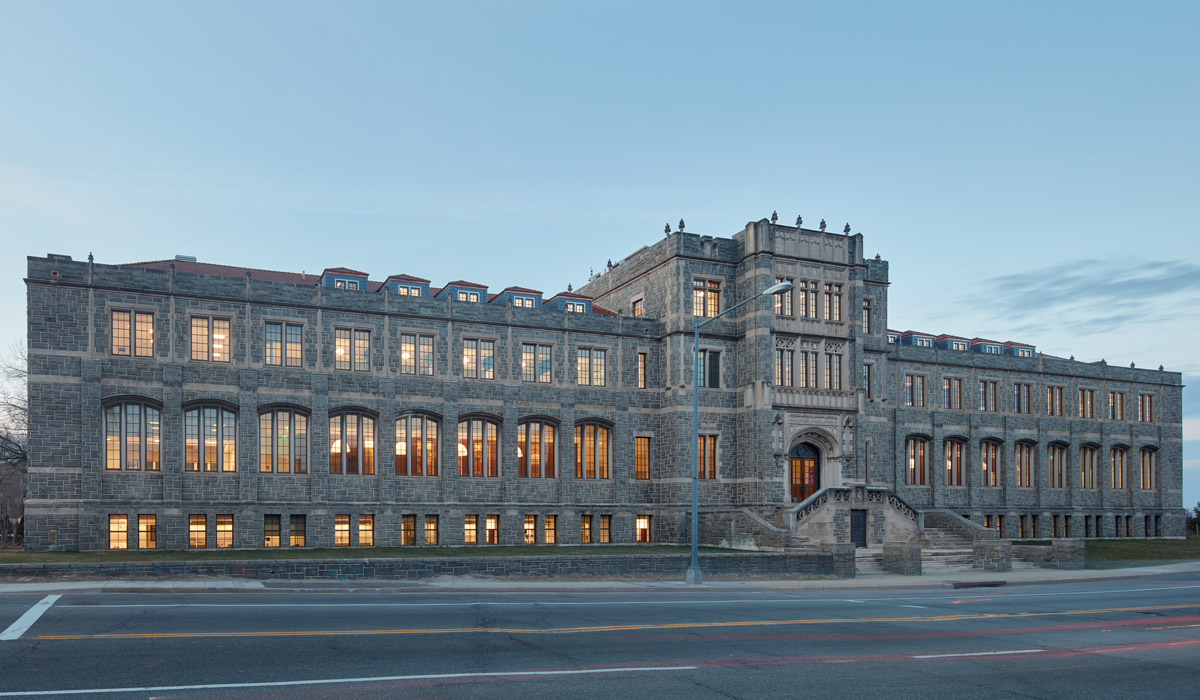Catholic University is comprised of 53 buildings totaling over 2 million square feet. Campus facilities feature many sustainable and environmental best practices. These sustainable amenities provide a vibrant, challenging, and uplifting collegiate experience for students and the greater Catholic University community. Learn about campus buildings and their sustainable amenities using the green campus map or request a Sustainability Tour of a LEED and WELL certified building.
WELL Certification
WELL Certification is a global rating system designed to support human health and well-being in buildings. Catholic University is pursuing WELL Certification for the Conway School of Nursing.
-

Conway School of Nursing
The Conway School of Nursing was designed to achieve both LEED Gold (LEED BD&C v4, Certified Gold, 2024) and WELL certification in alignment with the university's commitment to both sustainability and human health and well-being. Key features of the building include ongoing monitoring of air quality and thermal conditions to maximize occupant health and wellbeing, a focus on lighting and acoustics to support the unique needs and preferences of users, and the selection of biophilic design elements and high-quality furnishings that support indoor air quality and minimize toxins in the build environment, among many others. For a full overview of the WELL features of the building, visit our page dedicated to exploring the building.
LEED
Leadership in Energy and Environmental Design (LEED) is one of the most prominent green building certifications in the world. In addition to the Conway School of Nursing (details above), Catholic University is home to five other LEED-certified buildings.
-
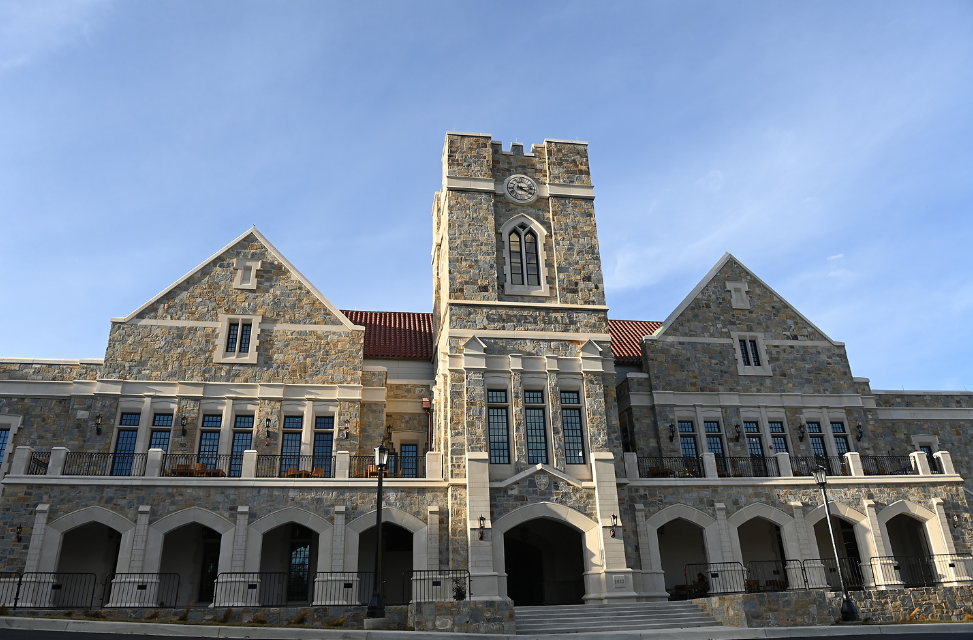
-

Maloney Hall
LEED BD&C v3 2009, Certified Gold, 2020
-
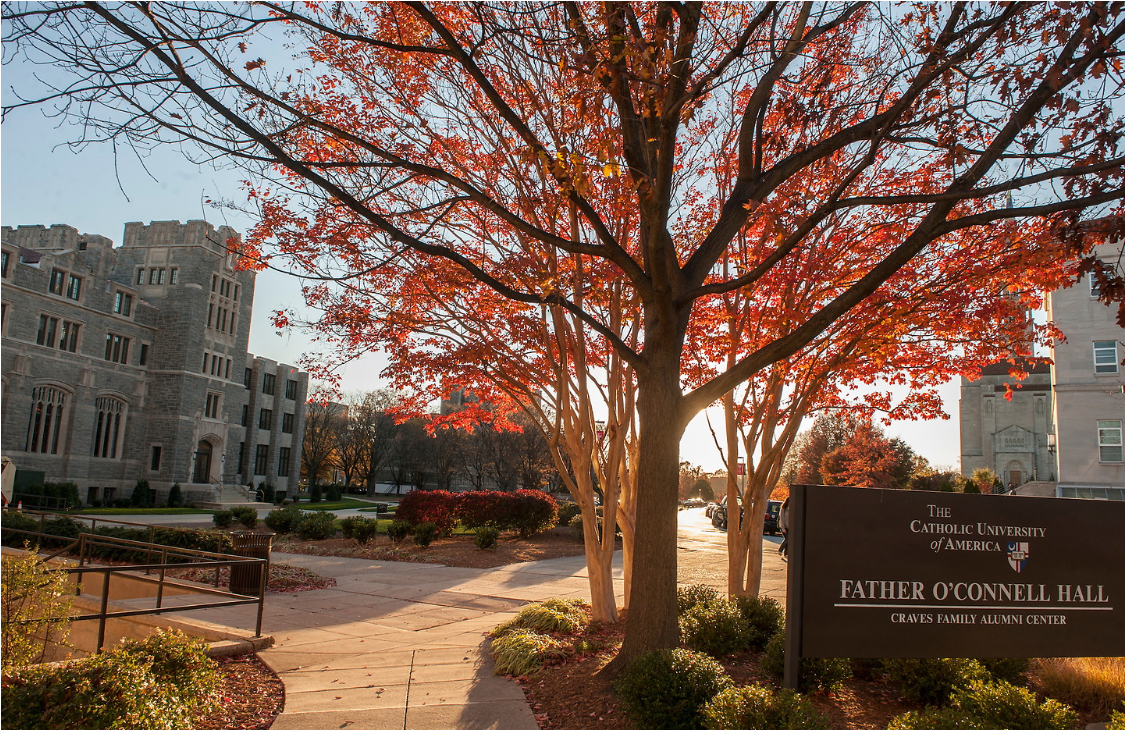
Father O'Connell Hall
LEED BD&C v3 2009, Certified, 2020
-
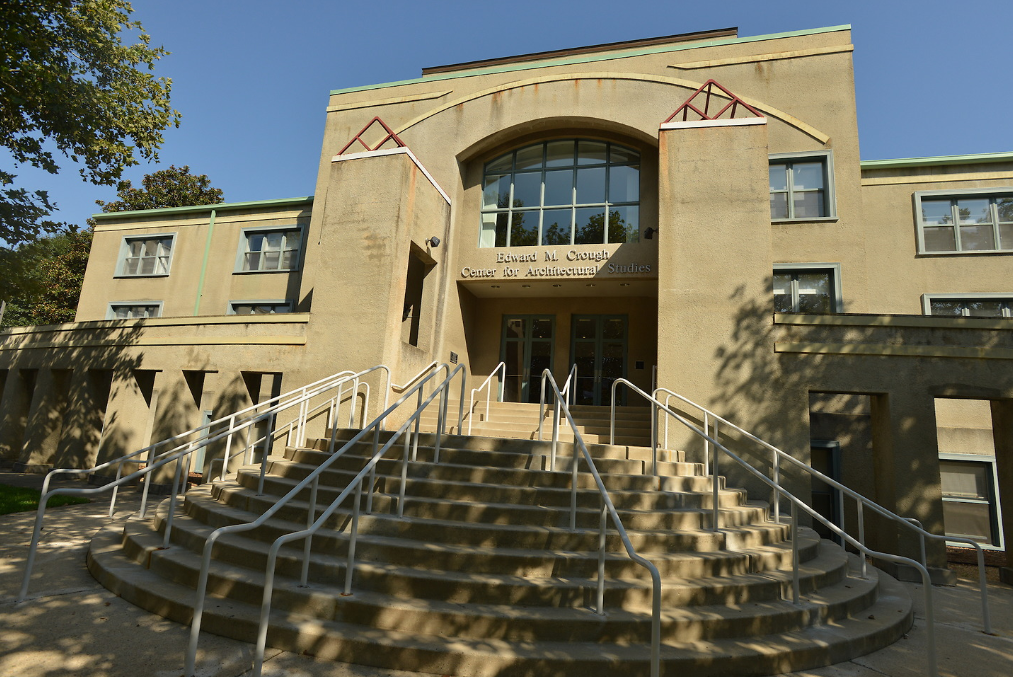
The Crough Center
LEED O&M v3 2009, Certified, 2014
-
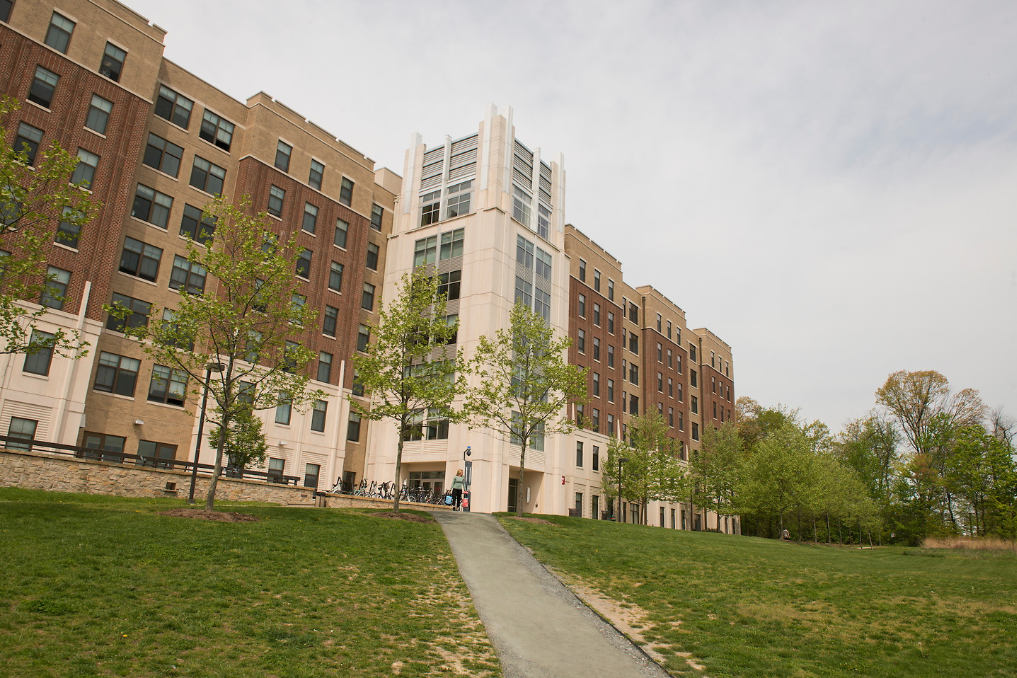
Building Interiors
As part of our green building efforts, Catholic University emphasizes sustainability and occupant health and wellness during building renovations. For instance, in 2023 the University completed several interior projects with a focus on sustainable design and furnishings that support healthy indoor air quality.
- In the Anthropology Suite in O'Boyle Hall, 87% of the furniture met stringent environmentally friendly certification criteria from Greenguard, InterTek Clean Air, or SCS Certified Indoor Advantage, with 6% repurposed from elsewhere. The flooring materials received CRI Green Label Plus and Cradle-to-Cradle Silver level certifications.
- The Columbus School of Law Lower Level Improvements achieved a 93% certification rate for its furniture selections, emphasizing indoor air quality, and the carpet, certified with CRI Green Label Plus, boasted post-consumer content and low volatile organic compounds.
- The Pryzbyla Hub featured many eco-conscious carpet and luxury vinyl tile selections, with 86% of the furniture complying with environmental certificates.
- The Pangborn Lobby renovation continued the university's sustainability commitment with furniture bearing Greenguard and InterTek Clean Air certifications.
LED lighting was also incorporated into each project to ensure energy efficiency.
